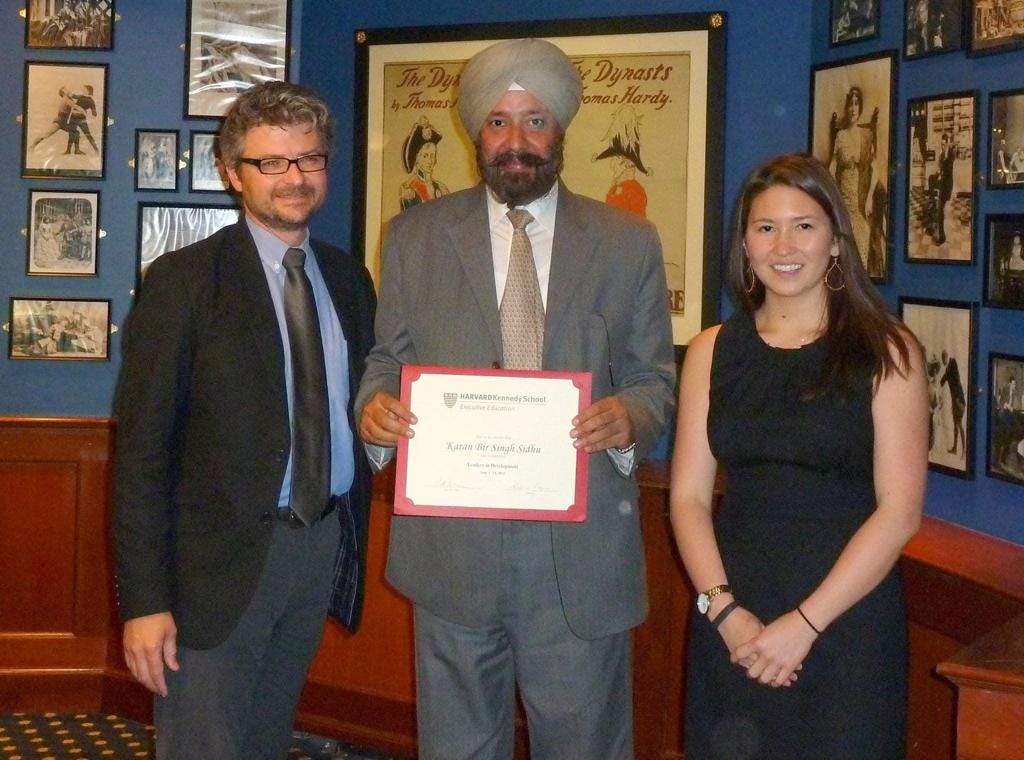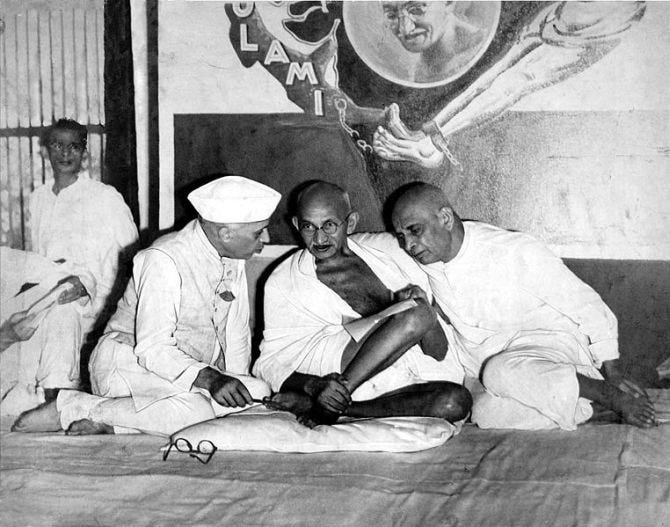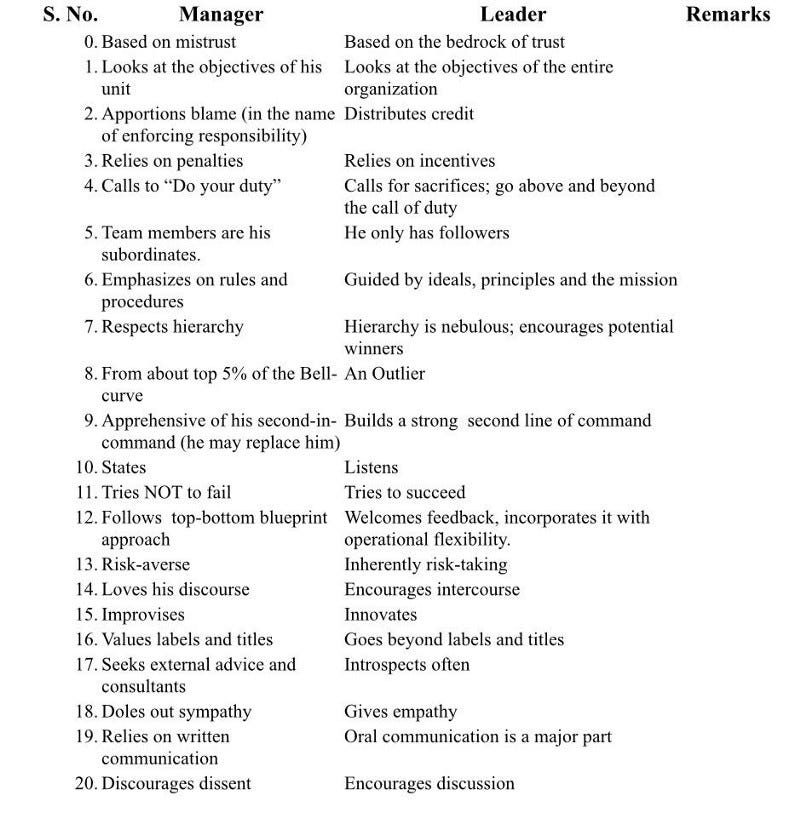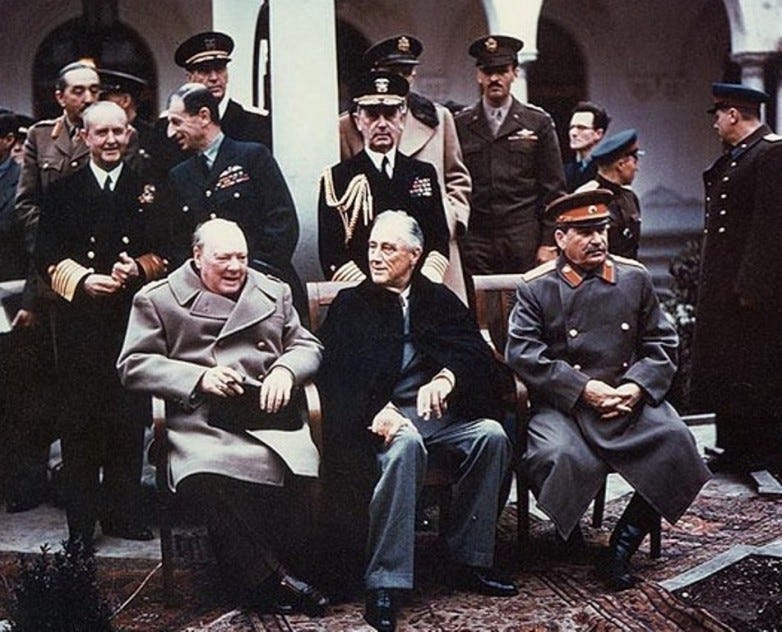Where do you stand on the "Leader-Manager Continuum": Self-analyse
20+1 ways in which the DNA of a Leader differs from that of a Manager.
“Leadership” is the flavour of the season
Pursuit of leadership, like spiritualism, is very much in demand these days. A large number of self-styled training gurus, life coaches are waxing eloquent about the attributes of leadership and, in a subtle way, soft-selling as to how the same can be imbibed. Leadership is often portrayed as a Holy Grail that will endow its holder with almost super-normal, if not supernatural powers, over its followers. It is also projected as a quality which is amplifies or magnifies one’s normal powers exponentially.
The terms "leadership" and "management" are often used interchangeably by many, particularly within the corporate sector. Below, we outline 21 fundamental differences between the two concepts and also introduce our proprietary, private self-assessment framework. This tool will quickly help you determine where you stand on this continuum, within just a few minutes.
20+1 ways in which the DNA of a Leader differs from that of a Manager
Often, the terms “leader” and “manager” are used interchangeably. Although similar in broad connotation, not only are these words not synonymous with each other, they have fundamentally different attributes. Oxford dictionary defines manager as a person responsible for controlling or administering an organization or group of staff. On the other hand, leader is defined as the person who leads or commands a group, organization, or country.
The Traditional View
The distinctions between a leader and a manager often centre on the orientation of their roles and approaches towards achieving objectives within an organisation. Both roles are crucial, but they embody different perspectives and methodologies in steering teams and projects towards success.
Key Differences
Vision vs. Execution: Leaders are primarily focused on setting the vision, inspiring, and motivating their team to achieve higher goals. They are forward-thinking and concerned with the direction in which an organisation or team is heading. Managers, on the other hand, are more concerned with executing the vision set by the leadership. They focus on managing people, projects, and tasks to ensure that the day-to-day operations align with the strategic goals.
Motivation and Influence vs. Control and Administration: Leaders motivate and influence their team through charisma, influence, and emotional connections. They strive to create an environment where team members are empowered to take initiatives. Managers tend to control or administer tasks, processes, and systems to ensure efficiency and order. They are often responsible for setting targets, evaluating performance, and implementing procedures.
Risk Taking vs. Risk Management: Leaders are typically more willing to take risks to achieve innovation and transformation. They encourage creativity and are open to new ideas that challenge the status quo. Managers are more inclined towards risk management, focusing on mitigating risks through careful planning, organisation, and problem-solving.
Strategic Thinking vs. Operational Thinking: Leaders engage in strategic thinking, looking at the bigger picture, identifying opportunities for growth, and contemplating long-term implications. Managers focus on operational thinking, dealing with the practical aspects of implementing strategies, optimising resources, and achieving immediate objectives.
Building Culture vs. Implementing Culture: Leaders play a key role in shaping and building the organisational culture based on core values and principles. They lead by example and influence the organisational ethos. Managers implement and reinforce this culture at the team level, ensuring that the daily operations reflect the established values and norms.
Empowering vs. Directing: Leaders empower people by delegating authority and encouraging autonomy, fostering a sense of ownership and accountability among team members. Managers often provide direction and supervision, ensuring that tasks are completed as per the guidelines and standards.
Our Unique Leader-Manager Template
We have tried to tabulate and compare the various qualities of the manager and a leader. Manager and leader are not two poles apart but every person is placed on a 0–100 continuum, with some of the qualities dominating. You may like to go through and see not only where you stand but also whether you agree with our views, if so to what extent.
Summing Up
The distinction between a leader and a manager is not about superiority but about roles and functions that complement each other within an organisation. Effective organisations often require individuals to embody both qualities, combining visionary leadership with efficient management to navigate the complexities of today's dynamic environment. Embracing both aspects can lead to a more flexible, responsive, and ultimately successful organisation. Balancing visionary leadership with practical management ensures that an organisation not only dreams big but also achieves those dreams through meticulous planning and execution.
Our Personal View
Managers keep the organizations moving but leaders really catapult them into the next quantum orbital, often following an unorthodox trajectory. So, where do you stand? Are there other qualities of the two that can be compared? Your feedback is most welcome.
And, tomorrow, stay tuned for “Attributes of Leadership”, something often discussed, much desired but seldom defined and rarely achieved.








